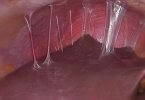What's in this article?
Healthy urine should be clear and straw-coloured, and shouldn’t be particularly smelly.
Some people find that their urine smells stronger and is darker first thing in the morning when it’s more concentrated, or generally when they’re dehydrated.
Also, certain food and drinks, including asparagus, beer, garlic and coffee, may temporarily give urine a stronger smell.
Certain medicines and vitamin and mineral supplements can also alter the odour of urine but never stop taking any medication without speaking to your GP first.
You may find the smell of your urine improves by drinking more fluids. Generally, make sure you drink enough fluid so you’re not thirsty for long periods, and steadily increase your fluid intake when exercising and during hot weather.
Causes of Urine Odor
Urine odor is related to the volume and concentration of a variety of substances excreted by the kidneys. Normally, urine that contains a lot of water has little to no odor. If your urine becomes highly concentrated a high level of waste products with little water urine odor may have a strong ammonia smell.
Many foods and medications, such as asparagus or certain vitamins, can affect the odor of urine. Sometimes, unusual urine odor may indicate a medical condition or disease, such as:
- Bladder infection
- Cystitis (bladder inflammation)
- Congenital heart disease in adults
- Diabetic ketoacidosis (high levels of blood acids called ketones)
- Gastrointestinal-bladder fistula (abnormal connection between the intestines and bladder)
- Maple syrup urine disease (rare genetic disease that causes difficulty breaking down certain amino acids)
- Metabolic disorder (a problem with the way your body converts the foods you eat into energy)
- Type 2 diabetes (uncontrolled)
- Urinary tract infection (UTI)
Urine Odor Symptoms & Signs
Normal urine is clear and has a straw-yellow color. While the odor of urine can vary somewhat, in most cases, it does not have a strong smell. With dehydration, the urine is more concentrated and may have a stronger ammonia scent than normal. Consumption of certain foods, such as asparagus (which can impart a characteristic odor to urine), and taking some medications may be causes for changes in the odor of urine. The presence of bacteria in the urine, such as with a urinary tract infection (UTI), can affect the appearance and smell of urine. When there is an infection in the urinary tract, the urine may take on a foul-smelling odor as well as appear cloudy or bloody. A burning sensation during urination may be a symptom of a UTI. The urine may also have an abnormally sweet odor in uncontrolled diabetes, and some rare genetic conditions can also cause the urine to have an abnormal or strange odor.
Odor Changes
| Sweet or fruity odour | Ketoacidosis (Diabetic, alcoholic, starvation) Maple syrup urine disease (infants, rare) |
| Ammoniacal odour | Bladder retention Urine at room temperature for prolonged period (“alkaline fermentaion”) Bacterial infection |
| Faecal odour | Bladder-Intestinal fistula E. coli infection Contamination with feces |
| Musty odour | Phenylketonuria |
| Sulfur odour | Cysteine decomposition Suppurative diseases of the GU tract |
| Faintly Aromatic | Volatile organic acids most marked in “concentrated” urine specimens |
| Swimming pool odour | Hawkinsinuria |
| Mousy odour Cabbage-like odour |
Tyrosinemia |
Urine Color Changes
Urine gets its yellow color from a pigment called urochrome. That color normally varies from pale yellow to deep amber, depending on the concentration of the urine. Darker urine is usually a sign that you’re not drinking enough fluid. “Your body needs a certain amount of fluid to function, so the body will hold on to fluid and the urine will become very strong and concentrated. When that happens, it will turn a darker color,” Griebling says.
The opposite is also true. If your urine is very pale, it means that you’re either drinking a lot of fluid, or you’re taking a diuretic a drug that forces the body to get rid of excess water.
Urine can turn a rainbow of colors, and an unusual hue isn’t necessarily cause for alarm. Certain medications can turn the urine fluorescent green or blue, carrots can tint it orange, vitamins can give it a yellow hue, and an inherited disease called porphyria can shade it the color of port wine.
How Often Do You Need to Go?
How often you need to go can be as important an indicator of your health as the color or smell of your urine. Most people take bathroom breaks about six to eight times a day, but you might go more or less depending on how much fluid you drink. If you’re constantly feeling the urge to go and it’s not because you’re drinking extra fluid, causes can include:
- Overactive bladder – involuntary contractions of the bladder muscle
- Urinary tract infection
- Interstitial cystitis – a condition that causes the bladder wall to become inflamed and irritated
- Benign prostate enlargement -growth of the prostate that causes it to squeeze the urethra and block the normal flow of urine out of the body
- Neurological diseases, including stroke and Parkinson’s disease
- Diabetes
When to see a doctor
Most changes in urine odor are temporary and don’t indicate serious illness. But sometimes an unusual urine odor is associated with an underlying medical condition. If you’re concerned about the odor of your urine, talk to your doctor.





